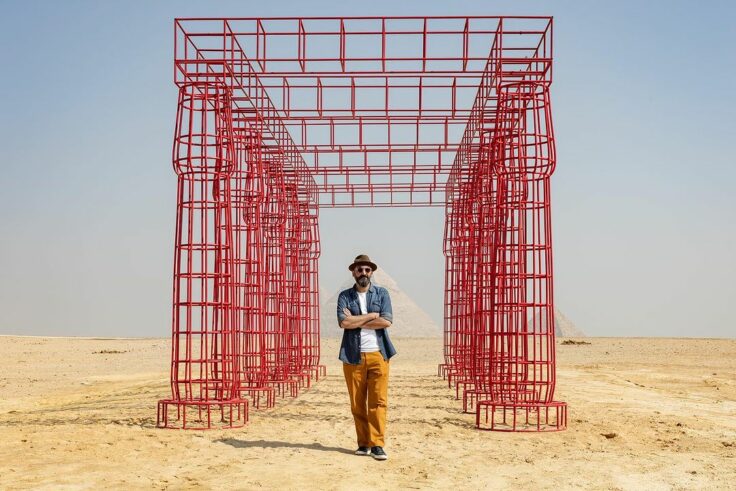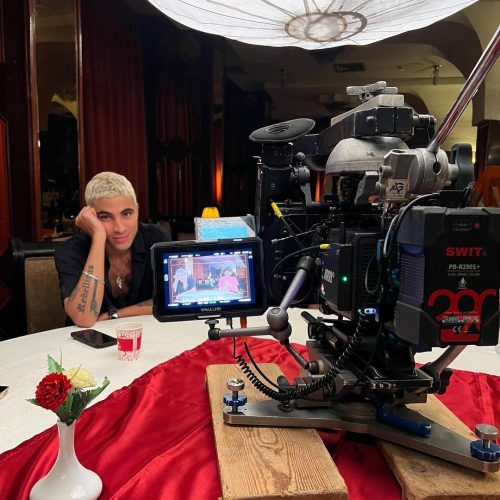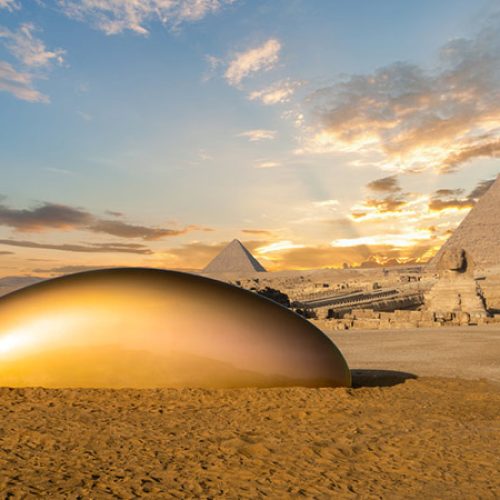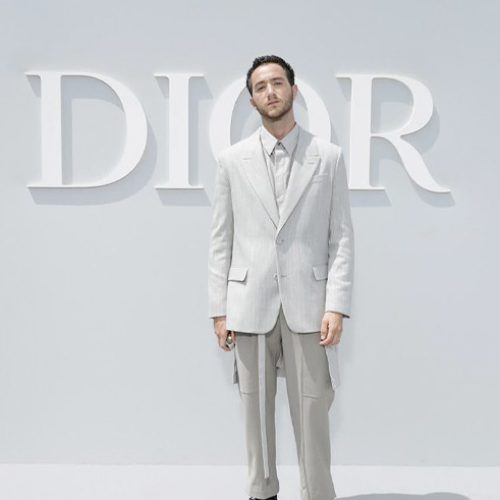Measuring the extent of someone’s talent often relies on its detection at first. If an individual isn’t aware of their skills, their genius could very easily go unnoticed, unless an unexpected encounter reveals their hidden potential. Such was the case for Sam Shendi, an Egyptian-born sculptor based in England and who is currently exhibiting his work at Art D’Égypte “Forever Is Now 03.”
“I didn’t know that I was going to be a sculptor,” Shendi confessed to MILLE. “I remember attending my first lessons in university in 1992 when my professor, in the middle of 300 students, told me that I was special. I didn’t know what he saw in my artwork but I remember it being difficult to accept as I initially wanted to be a graphic designer. I wanted to be like Tarek Nour or Walt Disney creating cartoons, I basically [wanted to] do something a bit more exciting,” added the 45-year-old.
After obtaining his Bachelor’s degree with honors from Helwen University of Fine Arts in Cairo and snatching the very prestigious Mahmoud Mokhtar Award along the way, building a career in sculpture became inevitable. After teaching abroad, filling in for lecturers on sick or maternity leave in the United Kingdom, Shendi found himself perpetually unfulfilled by his newfound profession. Wrestling with the intricacies of Western art techniques, he then came to the realization that a temporary retreat from the world of art was necessary though it came without any certainties of a return.
“In the European microcosm, it was really important for the viewer to acknowledge an artist’s reputation and overall recognition while focusing less on their work,” he explained. “This probably explained why I struggled so much in my first few years. A lot of people refused to deal with me and subsequently, I ended up leaving the world of art for seven long years and totally refused to go to any gallery or museum, or even mix with my own supposed kind as I felt like my flow of imagination was disturbed,” he continued.
Hopping from one project to the other as a self-employed designer, Shendi’s artistic abstinence eventually bore its fruits. He found himself suddenly brimming with inspiration. His newfound drive was channeled into creating meaningful works of art for personal pleasure, with the intention of leaving an indelible mark behind and make his family proud. As he began developing an artistic identity of his own, Shendi strictly adhered to several self-imposed principles, which still serve as the guiding pillars of his creativity today.
“I don’t want my work to relate to any particular culture. I wouldn’t like anyone to look at it and be able to tell where I am from. I want my crafts to be universal and for people to focus on what is in front of them rather than who is behind it,” he confessed. “As someone who suffers from anxiety, I don’t like meeting people much, hence why most of what I show is only about my work rather than who I am. That’s because I find people to be quite judgmental. They’ll judge you by your looks, your attitude, beliefs, your background, by your smell even. Instead, I’d rather just my work do the talking for me,” he added.
His talent certainly speaks for itself. Since making a return to art, the minimalist sculptor has brazenly risen through the ranks, establishing a name for himself across the channel— in the United Kingdom— his adoptive country.
Marking a full-circle moment in his creative journey, Shendi recently returned to his birth country for the third iteration of Art D’Egypte. Part of an esteemed cohort of artists that were invited to present their latest works against a backdrop quite like no other, namely the Great Pyramids of Giza, the annual art exhibition called on Shendi to dream up a large-scale sculpture that will be on display for 23-days until Nov. 18.
“Organizers of Art D’Egypte got in touch with me three years ago for their first edition asking me to participate. Unfortunately, for reasons that were beyond my control, I could not make it,” Shendi revealed, explaining that he had kept the first few sketches he had imagined back then. “As I received an invitation for the third edition, I explored the initial idea further, brought it to life, and put it on display,” he continued.
The result is a large, vivid red installation dubbed “The Phantom Temple” featuring columns made out of rounded steel rods. The artwork is a link between the past and present, exploring the imprint that ancient Egypt left on the land.
Speaking on the intention behind his artwork, Shendi explained how he wanted to respect and pay homage to the historical location he’d be exhibiting at as he did not want to take away from one of the world’s seven wonders, instead being “part of it,” all while straying away from the stereotypical depictions of the Pyramids.
“I wanted to do something different and involve the viewer. Not all of us are art-educated, so when you do public art as an artist, you need to speak to the majority. I didn’t want to bring a concept that is highly philosophical. I wanted to give something familiar, something that people can connect with simply without disturbing the view because what I do in my practice is for myself, and I share it with others,” Shendi said. “However, what I do with Art D’Égypte is for others as public art without viewers is not art.”









